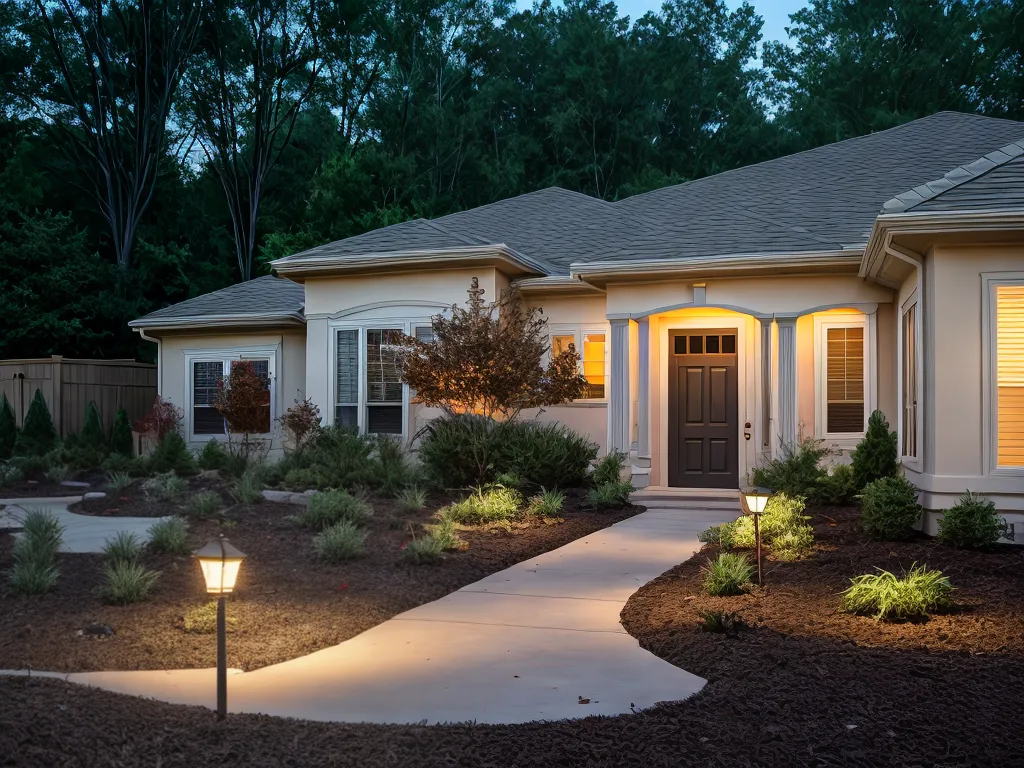
Installing exposed PVC conduit for your low voltage landscape lighting can provide an attractive accent that blends with your home's architecture. While exposed conduit requires more planning and care during installation than burying conduit underground, the end results are worth the extra effort. Follow this guide to properly and safely install exposed PVC conduit that protects your low voltage wiring while enhancing your home's curb appeal.
Selecting the Right PVC Conduit
Choosing the right type of PVC conduit is the first step for a professional exposed installation. Consider the following conduit options:
Schedule 40 PVC
Schedule 40 is the standard thickness for PVC conduit. It provides durability and protection while still allowing easy cutting, bending, and fittings installation. Schedule 40 PVC is the most common choice for exposed low voltage lighting projects.
Schedule 80 PVC
Schedule 80 PVC has a thicker wall than Schedule 40 and offers extra impact protection. It's harder to cut and bend and generally not necessary for low voltage landscape lighting.
PVC Elbows, Couplings, and Conduit Bodies
In addition to straight PVC conduit lengths, you'll need PVC elbows, couplings, and conduit bodies to connect lengths and route around corners. Match the schedule rating to your straight conduit.
Flexible Nonmetallic Conduit
Flexible nonmetallic conduit, also called ENT, allows easier installation around curved and angled surfaces. You can transition from stiff PVC to flexible conduit as needed.
Planning Your Conduit Layout
Careful planning ensures your exposed PVC conduit enhances your lighting design and landscape aesthetics. Consider the following when laying out your conduit:
-
Map out lighting fixture, transformer, and wire locations to determine conduit routing.
-
Minimize conduit lengths and elbows for easier installation.
-
Position conduit at edges, corners, and against surfaces to integrate it with your home's architecture.
-
Use flexible conduit in curved areas and to transition between lighting fixtures.
-
Plan conduit supports every 3-5 feet and on both sides of elbows and couplings.
Installing Conduit Supports
Conduit supports securely anchor exposed PVC conduit in place against walls and other surfaces. Follow these best practices when installing supports:
-
Use conduit straps, clamps, or hangers designed for exposed installation.
-
Install a support every 3-5 feet, and within 12 inches of each elbow or coupling.
-
Position supports to hold conduit tight against the mounting surface.
-
When running vertically, install supports starting 3 feet from the ground up.
-
Use masonry anchors for brick or concrete walls and wood screws for wood surfaces.
Proper conduit support spacing and installation prevents sagging and damage from impacts.
Cutting and Assembling PVC Conduit
With your conduit layout planned and mounting locations prepped, you can start cutting and assembling conduit runs:
-
Measure runs and cut conduit to length with a hacksaw for straight sections.
-
Deburr cut ends smooth with a knife or file to prevent wire insulation damage.
-
Dry assemble runs to test fit before permanent installation.
-
Use socket welded fittings and PVC cement to permanently connect conduit.
-
Ensure all joints are fully seated and square.
-
Stagger couplings when running multiple parallel conduits.
-
Use flexible conduit for curved and angled transitions.
Cutting conduits accurately and cementing smooth, aligned connections creates a professional finished look.
Pulling and Securing Low Voltage Wires
Low voltage landscape lighting wires transmit power from your transformer to each lighting fixture. Follow these guidelines when installing wires:
-
Carefully pull wires to avoid scuffs, scrapes, or sheath punctures.
-
Use wire lubricant if pulling tension seems excessive.
-
Leave 12-18 inches of slack at both fixture and transformer connections.
-
Avoid kinks, tight bends, and pinching wires in conduits, boxes, and fixtures.
-
Use wire ties or silicone sealant to securely anchor wires entering fixtures and transformer.
Properly routing and securing wire through conduit prevents hazardous shorts and damage to wire insulation.
Conduit Installation Do's and Don'ts
Adhere to these conduit installation tips to complete your low voltage lighting project like a professional:
Do
- Install expansion fittings where conduit crosses expansion joints.
- Slope conduit slightly to allow drainage and prevent moisture accumulation.
- Use weatherproof conduit fittings and boxes for all outdoor connections.
- Caulk around conduits when penetrating exterior walls to prevent air and water intrusion.
Don't
- Exceed 360 degrees of total bends between pull points or boxes.
- Use conduit for structural support or to hang fixtures, boxes, etc.
- Run conduit through unconditioned spaces like attics to avoid temperature variations.
- Use plastic conduit for applications requiring grounding.
Following best practices for exposed conduit installation results in lighting you can enjoy without worries of damage, hazards, or leaks. With the right PVC conduit mounted securely in place and wired properly, your low voltage landscape lighting will function reliably for many years.